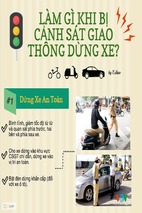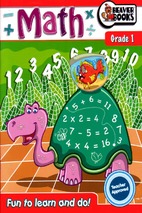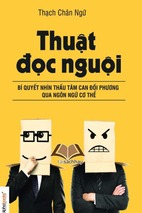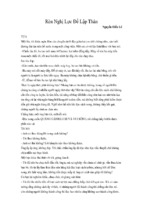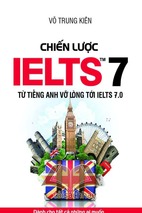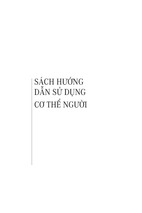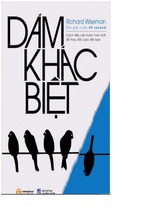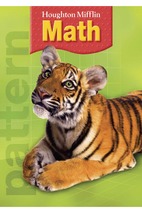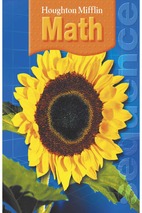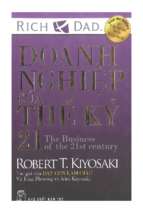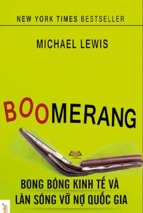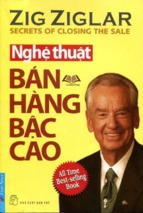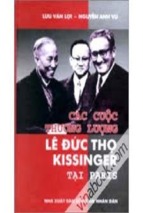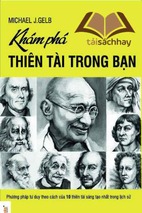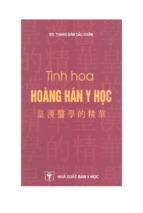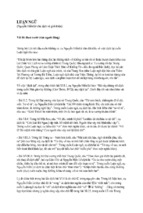O’Brien’s
The Things
They Carried
By Jill Colella
IN THIS BOOK
■
Learn about the life and background of Tim O’Brien
■
Preview an introduction to The Things They Carried
■
Explore the novel’s themes and character development in the
Critical Commentaries
■
Examine in-depth Character Analyses
■
Acquire an understanding of the novel with Critical Essays
■
Reinforce what you learn with CliffsNotes Review
■
Find additional information to further your study in the CliffsNotes Resource Center and online at www.cliffsnotes.com
IDG Books Worldwide, Inc.
An International Data Group Company
Foster City, CA • Chicago, IL • Indianapolis, IN • New York, NY
About the Author
Jill Colella earned a master’s degree at the University of Maryland in English literature, specializing in Vietnam War narratives in film and
literature. Ms. Colella, the daughter of a Vietnam
veteran, founded The Children of Vietnam Combat Veterans Project in 1997 to speak to the specific concerns of families of veterans. She is the
author of After Vietnam: War Stories from a Veteran’s Daughter, a memoir of the effects her father’s
service in Vietnam had on her family life.
Publisher’s Acknowledgments
Editorial
Project Editor: Michael Kelly
Acquisitions Editor: Gregory W. Tubach
Glossary Editors: The editors and staff at
Webster’s New World™ Dictionaries
Editorial Administrator: Michelle Hacker
Production
Indexer: York Production Services, Inc.
Proofreader: York Production Services, Inc.
IDG Books Indianapolis Production Department
CliffsNotes™ O’Brien’s The Things They Carried
Published by
IDG Books Worldwide, Inc.
An International Data Group Company
919 E. Hillsdale Blvd.
Suite 300
Foster City, CA 94404
Note: If you purchased this book without a cover, you should
be aware that this book is stolen property. It was reported as
"unsold and destroyed" to the publisher, and neither the
author nor the publisher has received any payment for this
"stripped book."
www.idgbooks.com (IDG Books Worldwide Web site)
www.cliffsnotes.com (CliffsNotes Web site)
Copyright © 2001 IDG Books Worldwide, Inc. All rights reserved. No part of this book, including interior design, cover design, and icons,
may be reproduced or transmitted in any form, by any means (electronic, photocopying, recording, or otherwise) without the prior written
permission of the publisher.
Library of Congress Control Number: 00-107702
ISBN: 0-7645-8668-8
Printed in the United States of America
10 9 8 7 6 5 4 3 2 1
1O/QX/RS/QQ/IN
Distributed in the United States by IDG Books Worldwide, Inc.
Distributed by CDG Books Canada Inc. for Canada; by Transworld Publishers Limited in the United Kingdom; by IDG Norge Books for Norway;
by IDG Sweden Books for Sweden; by IDG Books Australia Publishing Corporation Pty. Ltd. for Australia and New Zealand; by TransQuest Publishers Pte Ltd. for Singapore, Malaysia, Thailand, Indonesia, and Hong Kong; by Gotop Information Inc. for Taiwan; by ICG Muse, Inc. for Japan;
by Norma Comunicaciones S.A. for Columbia; by Intersoft for South Africa; by Eyrolles for France; by International Thomson Publishing for Germany, Austria and Switzerland; by Distribuidora Cuspide for Argentina; by LR International for Brazil; by Galileo Libros for Chile; by Ediciones
ZETA S.C.R. Ltda. for Peru; by WS Computer Publishing Corporation, Inc., for the Philippines; by Contemporanea de Ediciones for Venezuela;
by Express Computer Distributors for the Caribbean and West Indies; by Micronesia Media Distributor, Inc. for Micronesia; by Grupo Editorial
Norma S.A. for Guatemala; by Chips Computadoras S.A. de C.V. for Mexico; by Editorial Norma de Panama S.A. for Panama; by American Bookshops for Finland. Authorized Sales Agent: Anthony Rudkin Associates for the Middle East and North Africa.
For general information on IDG Books Worldwide’s books in the U.S., please call our Consumer Customer Service department at 800-762-2974.
For reseller information, including discounts and premium sales, please call our Reseller Customer Service department at 800-434-3422.
For information on where to purchase IDG Books Worldwide’s books outside the U.S., please contact our International Sales department at
317-572-3993 or fax 317-572-4002.
For consumer information on foreign language translations, please contact our Customer Service department at 800-434-3422, fax
317-572-4002, or e-mail
[email protected].
For information on licensing foreign or domestic rights, please phone 650-653-7098.
For sales inquiries and special prices for bulk quantities, please contact our Order Services department at 800-434-3422 or write to the address
above.
For information on using IDG Books Worldwide’s books in the classroom or for ordering examination copies, please contact our Educational
Sales department at 800-434-2086 or fax 317-572-4005.
For press review copies, author interviews, or other publicity information, please contact our Public Relations department at 650-653-7000 or
fax 650-653-7500.
For authorization to photocopy items for corporate, personal, or educational use, please contact Copyright Clearance Center, 222 Rosewood
Drive, Danvers, MA 01923, or fax 978-750-4470.
LIMIT OF LIABILITY/DISCLAIMER OF WARRANTY: THE PUBLISHER AND AUTHOR HAVE USED THEIR BEST EFFORTS IN
PREPARING THIS BOOK. THE PUBLISHER AND AUTHOR MAKE NO REPRESENTATIONS OR WARRANTIES WITH RESPECT TO
THE ACCURACY OR COMPLETENESS OF THE CONTENTS OF THIS BOOK AND SPECIFICALLY DISCLAIM ANY IMPLIED
WARRANTIES OF MERCHANTABILITY OR FITNESS FOR A PARTICULAR PURPOSE. THERE ARE NO WARRANTIES WHICH EXTEND
BEYOND THE DESCRIPTIONS CONTAINED IN THIS PARAGRAPH. NO WARRANTY MAY BE CREATED OR EXTENDED BY SALES
REPRESENTATIVES OR WRITTEN SALES MATERIALS. THE ACCURACY AND COMPLETENESS OF THE INFORMATION PROVIDED
HEREIN AND THE OPINIONS STATED HEREIN ARE NOT GUARANTEED OR WARRANTED TO PRODUCE ANY PARTICULAR
RESULTS, AND THE ADVICE AND STRATEGIES CONTAINED HEREIN MAY NOT BE SUITABLE FOR EVERY INDIVIDUAL. NEITHER
THE PUBLISHER NOR AUTHOR SHALL BE LIABLE FOR ANY LOSS OF PROFIT OR ANY OTHER COMMERCIAL DAMAGES,
INCLUDING BUT NOT LIMITED TO SPECIAL, INCIDENTAL, CONSEQUENTIAL, OR OTHER DAMAGES.
Trademarks: Cliffs, CliffsNotes, CliffsNotes, Inc. logo and all related logos and trade dress are registered trademarks or trademarks of IDG
Books Worldwide, Inc., in the United States and other countries. All other brand names and product names used in this book are trade names,
service marks, trademarks, or registered trademarks of their respective owners. IDG Books Worldwide, Inc., is not associated with any product
or vendor mentioned in this book.
is a registered trademark under exclusive
license to IDG Books Worldwide, Inc.
from International Data Group, Inc.
Table of Contents
Life and Background of the Author . . . . . . . . . . . . . . . . . . . . . . . . . . 1
Personal Background . . . . . . . . . . . . . . . . . . . . . . . . . . . . . . . . . . . . . . . . . . . . . . 2
The Early Years . . . . . . . . . . . . . . . . . . . . . . . . . . . . . . . . . . . . . . . . . . . . . . . . 2
Education and Vietnam . . . . . . . . . . . . . . . . . . . . . . . . . . . . . . . . . . . . . . . . . 3
Career Highlights . . . . . . . . . . . . . . . . . . . . . . . . . . . . . . . . . . . . . . . . . . . . . . . . . 4
Reconciliation through Storytelling. . . . . . . . . . . . . . . . . . . . . . . . . . . . . . . . . 4
Major Works. . . . . . . . . . . . . . . . . . . . . . . . . . . . . . . . . . . . . . . . . . . . . . . . . . 5
Introduction to the Novel . . . . . . . . . . . . . . . . . . . . . . . . . . . . . . . . . . 9
Introduction. . . . . . . . . . . . . . . . . . . . . . . . . . . . . . . . . . . . . . . . . . . . . . . . . . . . 10
A Brief Synopsis . . . . . . . . . . . . . . . . . . . . . . . . . . . . . . . . . . . . . . . . . . . . . . . . . 13
List of Characters . . . . . . . . . . . . . . . . . . . . . . . . . . . . . . . . . . . . . . . . . . . . . . . . 15
Character Map . . . . . . . . . . . . . . . . . . . . . . . . . . . . . . . . . . . . . . . . . . . . . . . . . . 20
Critical Commentaries . . . . . . . . . . . . . . . . . . . . . . . . . . . . . . . . . . . 21
The Things They Carried . . . . . . . . . . . . . . . . . . . . . . . . . . . . . . . . . . . . . . . . . . 22
Love . . . . . . . . . . . . . . . . . . . . . . . . . . . . . . . . . . . . . . . . . . . . . . . . . . . . . . . . . . 27
Spin . . . . . . . . . . . . . . . . . . . . . . . . . . . . . . . . . . . . . . . . . . . . . . . . . . . . . . . . . . 29
On the Rainy River . . . . . . . . . . . . . . . . . . . . . . . . . . . . . . . . . . . . . . . . . . . . . . 32
Enemies/Friends. . . . . . . . . . . . . . . . . . . . . . . . . . . . . . . . . . . . . . . . . . . . . . . . . 38
How to Tell a True War Story . . . . . . . . . . . . . . . . . . . . . . . . . . . . . . . . . . . . . . . 42
The Dentist . . . . . . . . . . . . . . . . . . . . . . . . . . . . . . . . . . . . . . . . . . . . . . . . . . . . 46
Sweetheart of Song Tra Bong . . . . . . . . . . . . . . . . . . . . . . . . . . . . . . . . . . . . . . . 49
Stockings . . . . . . . . . . . . . . . . . . . . . . . . . . . . . . . . . . . . . . . . . . . . . . . . . . . . . . 53
Church. . . . . . . . . . . . . . . . . . . . . . . . . . . . . . . . . . . . . . . . . . . . . . . . . . . . . . . . 55
The Man I Killed/Ambush. . . . . . . . . . . . . . . . . . . . . . . . . . . . . . . . . . . . . . . . . 57
Style . . . . . . . . . . . . . . . . . . . . . . . . . . . . . . . . . . . . . . . . . . . . . . . . . . . . . . . . . . 61
Speaking of Courage . . . . . . . . . . . . . . . . . . . . . . . . . . . . . . . . . . . . . . . . . . . . . 63
Notes . . . . . . . . . . . . . . . . . . . . . . . . . . . . . . . . . . . . . . . . . . . . . . . . . . . . . . . . . 67
In the Field. . . . . . . . . . . . . . . . . . . . . . . . . . . . . . . . . . . . . . . . . . . . . . . . . . . . . 70
Good Form . . . . . . . . . . . . . . . . . . . . . . . . . . . . . . . . . . . . . . . . . . . . . . . . . . . . 73
Field Trip . . . . . . . . . . . . . . . . . . . . . . . . . . . . . . . . . . . . . . . . . . . . . . . . . . . . . . 75
The Ghost Soldiers. . . . . . . . . . . . . . . . . . . . . . . . . . . . . . . . . . . . . . . . . . . . . . . 77
Night Life . . . . . . . . . . . . . . . . . . . . . . . . . . . . . . . . . . . . . . . . . . . . . . . . . . . . . 82
The Lives of the Dead . . . . . . . . . . . . . . . . . . . . . . . . . . . . . . . . . . . . . . . . . . . . 84
iv
CliffsNotes O’Brien’s The Things They Carried
Character Analyses. . . . . . . . . . . . . . . . . . . . . . . . . . . . . . . . . . . . . . 87
“Tim O’Brien” . . . . . . . . . . . . . . . . . . . . . . . . . . . . . . . . . . . . . . . . . . . . . . . . . . 88
Lt. Jimmy Cross . . . . . . . . . . . . . . . . . . . . . . . . . . . . . . . . . . . . . . . . . . . . . . . . . 89
Norman Bowker. . . . . . . . . . . . . . . . . . . . . . . . . . . . . . . . . . . . . . . . . . . . . . . . . 90
Mary Anne Bell . . . . . . . . . . . . . . . . . . . . . . . . . . . . . . . . . . . . . . . . . . . . . . . . . 91
Kiowa. . . . . . . . . . . . . . . . . . . . . . . . . . . . . . . . . . . . . . . . . . . . . . . . . . . . . . . . . 92
Rat Kiley . . . . . . . . . . . . . . . . . . . . . . . . . . . . . . . . . . . . . . . . . . . . . . . . . . . . . . 92
Linda . . . . . . . . . . . . . . . . . . . . . . . . . . . . . . . . . . . . . . . . . . . . . . . . . . . . . . . . . 93
Henry Dobbins . . . . . . . . . . . . . . . . . . . . . . . . . . . . . . . . . . . . . . . . . . . . . . . . . 94
Critical Essays . . . . . . . . . . . . . . . . . . . . . . . . . . . . . . . . . . . . . . . . . . 95
The Things They Carried in a Historical Context. . . . . . . . . . . . . . . . . . . . . . . . . 96
Narrative Structure in The Things They Carried . . . . . . . . . . . . . . . . . . . . . . . . . 97
Style and Storytelling in The Things They Carried . . . . . . . . . . . . . . . . . . . . . . . . 98
The Things They Carried and Loss of Innocence . . . . . . . . . . . . . . . . . . . . . . . . . 99
The Things They Carried and Questions of Genre . . . . . . . . . . . . . . . . . . . . . . . 101
CliffsNotes Review . . . . . . . . . . . . . . . . . . . . . . . . . . . . . . . . . . . . . 103
Fill in the Blank . . . . . . . . . . . . . . . . . . . . . . . . . . . . . . . . . . . . . . . . . . . . . . . . 103
Identify the Quote . . . . . . . . . . . . . . . . . . . . . . . . . . . . . . . . . . . . . . . . . . . . . . 104
Essay Questions . . . . . . . . . . . . . . . . . . . . . . . . . . . . . . . . . . . . . . . . . . . . . . . . 106
Practice Projects . . . . . . . . . . . . . . . . . . . . . . . . . . . . . . . . . . . . . . . . . . . . . . . . 107
CliffsNotes Resource Center . . . . . . . . . . . . . . . . . . . . . . . . . . . . . 108
Books . . . . . . . . . . . . . . . . . . . . . . . . . . . . . . . . . . . . . . . . . . . . . . . . . . . . . . . . 108
Primary Sources . . . . . . . . . . . . . . . . . . . . . . . . . . . . . . . . . . . . . . . . . . . . . 108
Secondary Sources. . . . . . . . . . . . . . . . . . . . . . . . . . . . . . . . . . . . . . . . . . . . 108
Articles . . . . . . . . . . . . . . . . . . . . . . . . . . . . . . . . . . . . . . . . . . . . . . . . . . . . 109
Film . . . . . . . . . . . . . . . . . . . . . . . . . . . . . . . . . . . . . . . . . . . . . . . . . . . . . . . . . 110
Internet Resources . . . . . . . . . . . . . . . . . . . . . . . . . . . . . . . . . . . . . . . . . . . . . . 110
Send Us Your Favorite Tips. . . . . . . . . . . . . . . . . . . . . . . . . . . . . . . . . . . . . . . . 111
Appendix: Map of Vietnam. . . . . . . . . . . . . . . . . . . . . . . . . . . . . . . 112
Index. . . . . . . . . . . . . . . . . . . . . . . . . . . . . . . . . . . . . . . . . . . . . . . . . 113
How to Use This Book
CliffsNotes O’Brien’s The Things They Carried supplements the original work,
giving you background information about Tim O’Brien, an introduction to the novel,
a graphical character map, a map of Vietnam highlighted with areas significant to
the novel, critical commentaries, expanded glossaries, and a comprehensive index.
CliffsNotes Review tests your comprehension of the original text and reinforces learning with questions and answers, practice projects, and more. For further information
on Tim O’Brien and The Things They Carried, check out the CliffsNotes Resource
Center.
CliffsNotes provides the following icons to highlight essential elements of particular interest:
Reveals the underlying themes in the work.
Helps you to more easily relate to or discover the depth of a character.
Uncovers elements such as setting, atmosphere, mystery, passion, violence, irony, symbolism, tragedy, foreshadowing, and satire.
Enables you to appreciate the nuances of words and phrases.
Don’t Miss Our Web Site
Discover classic literature as well as modern-day treasures by visiting the CliffsNotes Web site at www.cliffsnotes.com. You can obtain a quick download of a
CliffsNotes title, purchase a title in print form, browse our catalog, or view online
samples.
You’ll also find interactive tools that are fun and informative, links to interesting
Web sites, tips, articles, and additional resources to help you, not only for literature,
but for test prep, finance, careers, computers, and the Internet too. See you at
www.cliffsnotes.com!
LIFE AND
BACKGROUND
OF THE AUTHOR
Personal Background . . . . . . . . . . . . . . . . 2
Career Highlights . . . . . . . . . . . . . . . . . . . 4
2
CliffsNotes O’Brien’s The Things They Carried
Personal Background
The author Tim O’Brien is not unlike the character called “Tim”
that he created for his novel, The Things They Carried, as both author
and character carry the stories of similarly experienced lives. O’Brien
not only shares the same name as his protagonist but also a similar
biographical background. Readers should note and remember that
although the actual and fictional O’Briens have some experiences in
common, The Things They Carried is a work of fiction and not a nonfiction autobiography. This distinction is key and central to understanding the novel.
The Early Years
Like “O’Brien,” Tim O’Brien, born William Timothy O’Brien, Jr.,
spent his early life first in Austin, Minnesota, and later in Worthington, Minnesota, a small, insulated community near the borders of Iowa
and South Dakota. The first of three children, O’Brien was born on
October 1, 1946, at the beginning of the post-World War II baby
boom era.
His childhood was an American childhood. O’Brien’s hometown is
small-town, Midwestern America, a town that once billed itself as “the
turkey capital of the world,” exactly the sort of odd and telling detail
that appears in O’Brien’s work. Worthington had a large influence on
O’Brien’s imagination and early development as an author: O’Brien
describes himself as an avid reader when he was a child. And like his
other main childhood interest, magic tricks, books were a form of bending reality and escaping it. O’Brien’s parents were reading enthusiasts,
his father on the local library board and his mother a second grade
teacher.
O’Brien’s childhood is much like that of his characters—marked by
an all-American kid-ness, summers spent on little league baseball teams
and, later, on jobs and meeting girls. Eventually, the national quiescence
and contentment of the 1950s gave way to the political awareness and
turbulence of the 1960s, and as the all-American baby boom generation reached the end of adolescence, they faced the reality of military
engagement in Vietnam and a growing divisiveness over war at home.
Life and Background of the Author
3
Education and Vietnam
O’Brien was drafted for military service in 1968, two weeks after
completing his undergraduate degree at Macalester College in St. Paul,
Minnesota, where he had enrolled in 1964. He earned a bachelor’s
degree in government and politics. An excellent student, O’Brien looked
forward to attending graduate school and studying political science.
During the course of his college career, O’Brien came to oppose the
war, not as a radical activist but as a campaign supporter and volunteer
of Eugene McCarthy, a candidate in the 1968 presidential election who
was openly against the Vietnam War.
In 1968, the war in Vietnam reached its bloodiest point in terms of
American casualties, and the government relied on conscription to
recruit more soldiers. Further, graduate school deferments, which
exempted students from the draft, were beginning to be discontinued,
though O’Brien did not seek out this recourse. Disappointed and worried, O’Brien—like his character “Tim O’Brien”—spent the summer
after his graduation working in a meatpacking plant. Unlike his character, however, O’Brien passed his nights pouring out his anxiety and
grief onto the typewritten page. He believes it was this experience that
sowed the seeds for his later writing career: “I went to my room in the
basement and started pounding the typewriter. I did it all summer. My
conscience kept telling me not to go, but my whole upbringing told me
I had to.”
O’Brien hated the war and thought it was wrong, and he often
thought about fleeing to Canada. Unlike his fictional alter ego, however, he did not attempt it. Instead, O’Brien yielded to what he has
described as a pressure from his community to let go of his convictions
against the war and to participate—not only because he had to but also
because it was his patriotic duty, a sentiment that he had learned from
his community and parents who met in the Navy during World War
II. “It’s not Worthington I object to, it’s the kind of place it is,” O’Brien
told an interviewer. “The not knowing anything and not tolerating any
dissent, that’s what gets to me. These people sent me to Vietnam, and
they didn’t know the first thing about it.”
O’Brien ultimately answered the call of the draft on August 14, 1968
and was sent to Army basic training at Fort Lewis, Washington. He was
later assigned to advanced individual training and soon found himself
in Vietnam, assigned to Firebase LZ Gator, south of Chu Lai. (The
appendix of this book includes a map of Vietnam, including areas
4
CliffsNotes O’Brien’s The Things They Carried
referred to in the novel.) O’Brien served a 13-month tour in-country
from 1969 to 1970 with Alpha Company, the Fifth Battalion of the
46th Infantry, 198th Infantry Brigade, Americal Division. He was a
regular foot soldier, or, as commonly referred to in veterans’ slang, a
“grunt,” serving in such roles as rifleman and radio telephone operator
(RTO). He was wounded twice while in service and was relatively safe
during the final months of his tour when he was assigned to jobs in the
rear. O’Brien ultimately rose to the rank of sergeant.
After returning from his tour in March 1970, O’Brien resumed his
schooling and began graduate work in government and political science
at Harvard University, where he stayed for nearly five years but did not
complete a dissertation.
Career Highlights
In May 1974, O’Brien went to work briefly for The Washington Post
as a national affairs reporter before his attention was fully diverted to
the craft of fiction writing. He began and continues to publish regularly in various periodicals, including The New Yorker, The Atlantic
Monthly, Harper’s, Esquire, and Playboy, frequently excerpting parts of
his novels as autonomous short stories.
Reconciliation through Storytelling
Of particular note is a piece O’Brien wrote for The New York Times
Magazine about returning to Vietnam—his first trip back since his service there. In “The Vietnam in Me,” O’Brien probes the intersection
between memory, time, and witnessing the Vietnam War and his personal relationships. Usually guarded and self-conscious as a public subject—for example, it is rare to find a photo of O’Brien without his
signature baseball cap—his article was intimate and highly personal.
O’Brien made the trip back to Vietnam with a woman for whom he
left his wife, and he makes this plain in the article. O’Brien also
addresses other sensitive and personal subjects such as his own readjustment after serving in Vietnam: “Last night,” he wrote, “suicide was
on my mind. Not whether, but how.”
Despite his personal difficulties and despite his intention to cease
writing after completing In the Lake of the Woods (1994), O’Brien continues to produce works that illuminate the human response to war and
Life and Background of the Author
5
articulate the strain associated with veterans (like O’Brien himself ) reconciling what they saw and did during the Vietnam War with the values and mores they had learned prior to Vietnam.
O’Brien maintains that The Things They Carried “is meant to be
about man’s yearning for peace. At least [he] hopes it is taken that way.”
For O’Brien, through his own writing career and through the veteran
characters he has conceived, this “yearning” is partially satisfied through
the act of storytelling, getting at the truth of an idea or event by retelling
and embellishing it. In this way, The Things They Carried is a culmination of O’Brien’s earlier works and is a culmination of themes—courage,
duty, memory, guilt, and storytelling—present in all his works.
Major Works
O’Brien’s first published work was a war memoir and account of his
year as a “grunt” in Vietnam, If I Die in a Combat Zone: Box Me Up
and Ship Me Home (1973). This book begins probing the themes that
dominate most of O’Brien’s works, particularly the issue of moral
courage. He followed up his autobiographical account with a debut
novel entitled Northern Lights (1975), which posits two brothers against
one another as foils—one brother went to Vietnam and the other did
not. The crux of the novel, which is set in O’Brien’s native Minnesota,
is a cruel blizzard against which both brothers must struggle. Through
this experience, the brothers learn more about each other, and their own
motivations and values are illuminated in their own minds. This early
work signals the reflection, self-reference, and thorough interior probing of characters that will become the hallmark of O’Brien’s style.
O’Brien’s next novel departs from the more traditional form of
Northern Lights. Going After Cacciato (1978) is a more surreal and fantastical novel that brought O’Brien to wider public acclaim and earned
him the 1979 National Book Award in fiction. A sort of dark, ironic
comedy, the subject, an Army private, Cacciato, who catalyzes the story’s
action, deserts his unit in Vietnam and heads for the Paris peace talks.
Literally walking away from the war, the other members of his unit are
ordered to pursue him. The story is told from the point of view of Paul
Berlin, the character that most resembles O’Brien, as they follow Cacciato across the world. O’Brien begins to push the limits of truth and
believability in this novel as well as the bounds of temporality, both stylistic choices that reappear in The Things They Carried.
6
CliffsNotes O’Brien’s The Things They Carried
Nuclear Age (1985) was O’Brien’s third novel and the farthest departure from his own experience. Set in 1995, O’Brien’s protagonist,
William Cowling, is a middle-aged man who grew up under the atomic
umbrella, so to speak. He suffers severe paranoia over the possibility of
nuclear war and finds solace in digging a hole in his backyard as an
attempt to bury and quiet all the thoughts that antagonize him. Again,
in this novel, O’Brien demonstrates his adeptness in creating a comic
look at serious subjects, this being the real fear and threat of the Bomb.
After a two-year interim, O’Brien’s short story, “The Things They
Carried,” the first vignette in the later novel of the same name, was first
published in Esquire, and it received the 1987 National Magazine
Award in Fiction. The short story was also selected for the 1987 Best
American Short Stories volume and for inclusion in the Best American
Short Stories of the 1980s. Additionally, O’Brien’s short stories have been
anthologized in The O. Henry Prize Stories (1976, 1978, 1982), Great
Esquire Fiction, Best American Short Stories, (1977, 1987), The Pushcart
Prize (Volumes II and X), and in many textbooks and Vietnam-related
collections.
O’Brien published The Things They Carried in 1990, returning to
the immediate setting of Vietnam during the war, which is present in
his other novels. O’Brien’s return to the rich raw materials of his own
experience proved fruitful, as The Things They Carried won the 1990
Chicago Tribune Heartland Award in fiction. The novel was selected by
The New York Times as one of the year’s ten best novels and was a finalist for a Pulitzer Prize. In 1991, O’Brien was awarded the Melcher
Award for The Things They Carried and won France’s Prix du Meilleur
Livre Etranger in 1992.
The follow-up novel, In the Lake of the Woods, published in 1994,
again takes up the major themes seen in O’Brien’s work: guilt, complicity, culpability, and moral courage. O’Brien invents protagonist John
Wade, a Vietnam veteran who aspires to win a senatorial election. He
loses by a landslide, however, as charges about his complicity in the My
Lai massacre come to light during his campaign. To recover from the
defeat, John and his wife Kathy stay at a cabin on the shores of a Minnesota lake. O’Brien couches the novel in the style of magical realism
and adds an element of mystery as Kathy disappears, and blame for her
disappearance (and possible death) fall on her husband. John is forced
to confront the deep denial he harbors about his participation in the
war as O’Brien raises larger questions about the fallout of war and the
consequences of wars after the fighting has ceased and the participants
Life and Background of the Author
7
return home changed. In the Lake of the Woods won the James Fenimore
Cooper Prize from the Society of American Historians and was selected
as the best novel of 1994 by Time magazine.
In his most recent novel, Tomcat in Love, O’Brien creates a Vietnam veteran protagonist, Tom Chippering, though the subject of
O’Brien’s novel is not war, but love. A New York Times Notable Book
of the Year, Tomcat in Love is a comic novel about a sexist, politically
incorrect hero, one that readers love to hate. O’Brien explains that [his]
“real fans will love the book. There are so-called fans who are basically
Vietnam junkies, but the people who appreciate the writing will like
this. I think this is my best book.”
O’Brien has received awards from the Guggenheim Foundation, the
National Endowment for the Arts, and the Massachusetts Arts and
Humanities Foundation. Adept at sly comic fiction about mundane or
serious topics, O’Brien is a master of creative storytelling, a manipulator of literary form, and one of the most challenging authors of his time
in terms of how he intermixes form and content.
INTRODUCTION
TO THE NOVEL
Introduction. . . . . . . . . . . . . . . . . . . . . . . 10
A Brief Synopsis . . . . . . . . . . . . . . . . . . . 13
List of Characters . . . . . . . . . . . . . . . . . . 15
Character Map . . . . . . . . . . . . . . . . . . . . 20
10
CliffsNotes O’Brien’s The Things They Carried
Introduction
The Things They Carried is a powerful meditation on the experiences
of foot soldiers in Vietnam and after the war. The work is simultaneously a war autobiography, writer’s memoir, and group of fictional short
stories. Subtitled “A Work of Fiction,” O’Brien immediately and deliberately blurs the line between fact and fiction by dedicating the novel
to individuals that the reader soon discovers are the novel’s fictional
characters. To further complicate the genre blending and blurring
between fiction and reality, O’Brien creates a protagonist, a Vietnam
veteran, named “Tim O’Brien.” The creation of this fictional persona
allows O’Brien to explore his real emotions as though they were fictional creations, and simultaneously challenges us when we dismiss a
story as fiction when it could just as easily be true. The originality and
innovation of O’Brien’s invented form are what make the novel particularly compelling because its main theme—more so than even the Vietnam War—is the act of storytelling. Storytelling becomes an expression
of memory and a catharsis of the past. Many characters in the novel
seek resolution of some kind.
Readers should note the designations used in this study guide to distinguish between the author, Tim O’Brien, and the fictionalized character, “Tim O’Brien,” who is the main character of the novel. While
O’Brien and “O’Brien” share a number of similarities, readers should
remember that the work is a novel and not an autobiography of the
writer who wrote it. Instead, the novel is presented as the autobiography of the fictional character.
The medium becomes part of the novel’s message; the unreliable
protagonist “Tim O’Brien” continually questions the veracity of the
stories he tells and the hearsay he retells, causing, in turn, the readers
to question the veracity of the very stories that O’Brien confronts them
with. For example, at one point we believe O’Brien, such as when he
describes his fear and shock after killing a Vietnamese soldier, but he
then challenges us by casting doubt on the soldier’s life and existence.
The act of storytelling becomes more important than the stories told.
This quality is a characteristic of many fiction and non-fiction works
that comprise the Vietnam War literature genre.
The Vietnam War era was a historical moment marked by confusion and conflict, from the disagreement over the war to the inconsistent and unstructured war of attrition that soldiers were asked to fight.
This confusion and conflict is often experienced by individuals in
Introduction to the Novel
11
Vietnam War literature as well, a sort of microcosm of the larger macrocosm of disorder and chaos. This theme of chaos leads to the tone of
uncertainty present in The Things They Carried. For example, O’Brien
describes how “Tim O’Brien” struggles to decide whether he should
avoid military service by fleeing to Canada. The historical issue of draftdodging, that is, escaping from the country to avoid the military draft,
was a high pressure topic about which many contemporary organizations felt strongly. O’Brien takes us through both sides of the issue, feeling the fear of a young man facing military service and possibly death
to one feeling a patriotic duty toward his country. Many of O’Brien’s
stories in The Things They Carried highlight important historical tensions regarding Vietnam and present multiple perspectives, leaving the
reader with more questions than answers.
One of the important themes O’Brien confronts in the novel is the
pressure caused by feeling the need to adhere to some cultural or community standard of duty, courage, or patriotism. Commonly referred
to as “jingoism,” this notion is a frequent theme in Vietnam War related
fiction, as most soldiers who fought in Vietnam were born and reared
just after World War II. (Soldiers in World War II are thought of as having a much less conflicted sense of their place in the war and their duty
to their country, although it was by no means without debate.) Soldiers
in Vietnam, therefore, absorbed the mores and values of their parent’s
generation—that is, the so-called G.I. generation who fought World
War II—including duty, patriotism, and service.
Many young men who enlisted or were drafted found, once in Vietnam, that what they saw there and what they did there contradicted the
message of service they had absorbed as they grew into their political
consciousness during the Kennedy administration and the continued
expansion of the Cold War. These feelings of confusion were fueled in
large part by social action in the U.S., including peace rallies, the Hippie movement, and resistance music of the 60s and 70s. Prominent
examples of this growing pressure are the Woodstock Music Festival in
1969, a gathering of music and people that supported peace and
opposed war, and the violent anti-war protests at the Democratic
National Convention in Chicago in 1968.
Even at its time, the U.S. involvement in the Vietnam War brought
on strong debates for and against, from within the War community and
from without. O’Brien inserts himself and his characters into this discussion, using pressing images such as a young Vietnamese girl dancing in the midst of rubble and corpses, as well as the character of Henry
12
CliffsNotes O’Brien’s The Things They Carried
Dobbins who, although an effective soldier, harbors thoughts of joining the clergy. O’Brien gives his readers the opportunity to take sides
on many of these debates, but always reminds readers that their thoughts
are products more of themselves than any intrinsic meaning in the stories of war.
O’Brien demonstrates this—the reminder that what we think is a
product of our own perceptions and recollections—through his innovative form. He sets out deliberately to manipulate the audience as they
read his work, an act intended to provoke his audience into forming an
opinion not about the Vietnam War, but about storytelling (or more
precisely, story hearing). For example, O’Brien sets his reader up for a
confirmation as he sketches out “Speaking of Courage,” a seemingly
traditional narrative about a soldier’s difficulty readjusting to civilian
life. O’Brien uses a narrative style called free indirect discourse, where the
narrator supplies necessary information about Norman Bowker, and
readers have no reason to doubt this information.
But, in the next chapter, “Notes,” O’Brien invites his readers into
his writing studio, so to speak, by describing how the story of Norman
Bowker came to be written. In doing so, “O’Brien” explains that some
of the information he provided in “Speaking of Courage” was true and
some was invented. By pointing out this inconsistency of factual truth,
“O’Brien”/O’Brien challenges readers to make judgments about how
much they value storytelling and why they value it. For example, do
readers need a story to be actual and factual to believe it? Is a story that
is fantastical (such as “The Sweetheart of Song Tra Bong”) valuable?
Should it be believed? O’Brien’s choice of form raises a fact or fiction
debate and also answers it: Any distinction between fact and fiction is
a moot point.
For O’Brien, the “factuality” or “fictionality” of a story is, by far, secondary to the effect of the story on the reader. If the work evokes an
emotional response, then it is a truth. For “O’Brien”/O’Brien, the primacy of emotion is a metaphorical comment on war: “In war you lose
your sense of the definite, hence your sense of truth itself, and therefore it’s safe to say that in a true war story, nothing is ever absolutely
true.” O’Brien’s form, an amalgamation of the choices to share his protagonist’s name, to write a series of related vignettes, and the deliberate
blurring of the boundary between fact and fiction, is meant to create a
loss of the “sense of the definite” in the reader. Literary critic Toby Herzog suggests that “the ambiguity and complexity of the book’s form and
content also mirror for readers the experience of war.”
Introduction to the Novel
13
While part of O’Brien’s objective is to create an aesthetic that simulates the chaos and uncertainty that characterized soldiers’ experiences,
within the genre of War literature, specifically Vietnam War-related
Literature, O’Brien’s novel does the opposite. The Things They Carried,
with its stylistic ambiguity, is also a tool for understanding the Vietnam
War. Literature has often been used as a path to understanding history,
and O’Brien follows the tradition of literary precursors such as Wilfred
Owen, Ernest Hemingway, and Graham Greene.
O’Brien’s novel originates at an important post-war moment, one
which differed greatly from the post-World War I era in which Hemingway wrote. The main differences and obstacles for Vietnam veterans were the divisiveness of the war and the tide of public opinion
opposing the war. Vietnam veterans’ return from the war—unlike the
return of soldiers from World War I and World War II—was not celebrated or lauded. As the Nixon administration transitioned to the Ford
administration, the general public wanted to forget about the longest
foreign military involvement by the U.S. and the failure of this engagement to bring about its intended agenda. In short, the United States
had not clearly won or lost, and the esteem of veterans suffered.
Throughout the late 70s and early 80s, veterans struggled to receive
recognition and to bring attention to the problems of post-traumatic
stress disorder and survivor guilt from which many veterans suffered.
Vietnam veterans such as Tim O’Brien, John Delvecchio, and Al Santoli helped to spark and maintain interest in a public discourse on
the war.
The ambiguity of The Things They Carried reflects the lack of resolution of the war and illuminates the necessity to use fact, fiction, or
fictionalized fact to tell the stories of Vietnam.
A Brief Synopsis
Called both a novel and a collection of interrelated short stories, Tim
O’Brien’s The Things They Carried is a unique and challenging book
that emerges from a complex variety of literary traditions. O’Brien presents to his readers both a war memoir and a writer’s autobiography, and
complicates this presentation by creating a fictional protagonist who
shares his name. To fully comprehend and appreciate the novel,
14
CliffsNotes O’Brien’s The Things They Carried
particularly the passages that gloss the nature of writing and storytelling,
it is important to remember that the work is fictional rather than a conventional non-fiction, historical account.
Protagonist “Tim O’Brien” is a middle-aged writer and Vietnam
War veteran. The primary action of the novel is “O’Brien’s” remembering the past and working and reworking the details of these memories of his service in Vietnam into meaning.
Through a series of linked semi-autobiographical stories, “O’Brien”
illuminates the characters of the men with whom he served and draws
meaning about the war from meditations on their relationships. He
describes Lt. Jimmy Cross as an inexperienced and ill-equipped leader
of Alpha Company, both in-country and at a post-war reunion. Years
after the war, the two spent an afternoon together remembering their
friends and those who were killed.
In the introductory vignette, O’Brien describes each of the major
characters by describing what they carry, from physical items such as
canteens and grenades and lice to the emotions of fear and love that
they carry. After the first chapter, the narrator is identified as “Tim
O’Brien,” a middle-aged writer and veteran.
“O’Brien” relates personal stories, among them a story that he had
never divulged before about how he planned to flee to Canada to avoid
the draft. “O’Brien,” who spent the summer before he had to report to
the Army working in a meatpacking factory, left work early one day and
drove toward Canada, stopping at a fishing lodge to rest and devise a
plan. He is taken in by the lodge owner, who helps him confront the
issue of evading the draft by taking him out on the lake that borders
Canada. Ultimately, “O’Brien” yields to what he perceives as societal
pressures to conform to notions of duty, courage, and obligation, and
he returns home instead of continuing on to Canada. Through the
telling of this story, “O’Brien” confesses what he considers a failure of
his convictions: He was a coward because he went to participate in a
war in which he did not believe.
As a writer, O’Brien constantly analyzes and comments upon how
stories are told and why they are told. For example, he tells the story of
Curt Lemon’s death and proceeds to analyze and explain why it holds
an element of truth. Ultimately, he surmises, “truth in a story is not
necessarily due to ‘factual’ accuracy.” Instead, if the story affects the
reader or listener in a personal and meaningful way, then that emotion
is the truth of the story. O’Brien tests these ideas by relating the stories
Introduction to the Novel
15
that others told in Vietnam, like the story of a soldier who brought his
girlfriend to Vietnam and grows more and more terrified as she becomes
fascinated by the war and ultimately never returns home. The soldiers
who hear the story doubt its truth, but are drawn into the story
nonetheless, showing that factual accuracy is less important to truth
than emotional involvement.
The recurring memory of the novel that O’Brien recalls as a sort of
coda, or repeated image, is the death of his friend and fellow soldier,
Kiowa. Kiowa was a soft-spoken Native American with whom
“O’Brien” made a strong connection. The scene of Kiowa’s death in a
battlefield becomes the basis for several of the novel’s vignettes: “Speaking of Courage,” “In the Field,” “Field Trip,” and “Notes.” In each of
these, O’Brien recalls snippets of memory and builds an indictment
against the wastefulness of the war.
In “Speaking of Courage,” the fictional “O’Brien” presents a story
that he wrote about a Vietnam comrade named Norman Bowker.
“O’Brien” describes Bowker’s difficulty adjusting to civilian life after he
returns from Vietnam as he recalls his own ease slipping back into the
routine of daily life, which for him was graduate school. In the end, in
“Notes,” “O’Brien” describes how Bowker suggested that he (“O’Brien”)
write a story about a veteran with problems readjusting and intense feelings of survivor guilt. “O’Brien” realizes that he must not have put the
memories of Vietnam behind him because he constantly writes about
them.
Finally, “O’Brien” remembers a girl from his childhood who died
from cancer, the first dead body he saw before being in-country. He
describes how as a little boy, “Timmy,” he could dream her alive and
see and talk to her. He recognizes the similarity of his ability to animate
her in his mind and his writing about Vietnam, and realizes that he tells
these stories to save his own life.
List of Characters
“Tim O’Brien” The protagonist of the novel, “O’Brien” symbolizes memory and storytelling, two central themes of the novel. He
is a young foot soldier in the Vietnam War, a member of Alpha
Company. He is also the fictional persona of O’Brien the writer, and
similarly is a middle-aged writer with a Midwestern, middle-class


